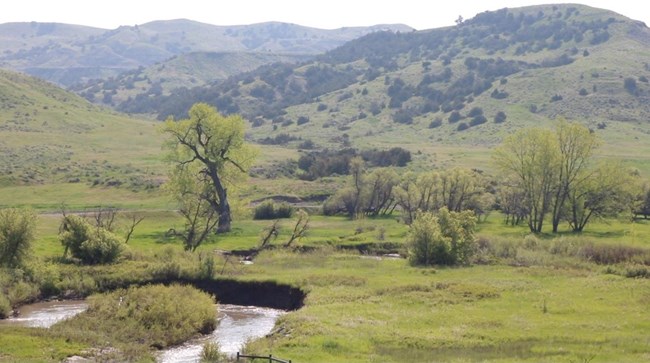Last updated: July 2, 2021
Article
Native Histories at American Sites of Conflict

University of Montana
Colonial Encounters
Violence marked many of the interactions between Native inhabitants and European settlers across the continent, but some of these chapters are underrepresented in written histories, leaving many questions about what life was like for Native people in conflict. The Pueblo of Isleta received a grant in 2019 to investigate questions like these through archeological documentation of two Spanish contact and early colonial period sites in New Mexico: the Ancestral Tiwa pueblo of Pottery Mound and the Ancestral Piro pueblo of Sevilleta. Prior research at these sites found metal objects, such as armor and munitions, and indications of structural fires. The research will help uncover probable histories of conflict, provide the people of Pueblo of Isleta with new information about the experiences of their ancestors, and create opportunities for youth to get involved in archeology and preservation work. Research like this may help to bring more Native perspectives to narratives of colonial history.
Players in the War for Independence
The American Revolution meant many different things for Native nations, who saw it as a time of alliances and opportunity, but also loss and dispossession. The Seneca Nation of Indians received a 2016 grant to study one local impact: a 1779 battle known as Bucktooth Run, part of an American military campaign north into Indigenous territories on the then-western frontier of today’s New York state. Seneca people recorded stories of the destruction of towns and cornfields during this campaign, but American military records minimized this event. The Seneca Nation’s grant-supported research in oral history, archeology, history, and social science stressed the importance of the war in Seneca history and memory, and suggested ways to interpret contradictory sources about the battle in ways that reconciled historical records and cultural memory. Other grant projects illuminate the participation of Haudenosaunee, Mohican, and Mohawk peoples in the Revolution and settler expansion westward into Shawnee territories, and many more Revolutionary stories remain to be told.
Persevering through Threats and Tragedy
The nineteenth century saw many Native nations in the American west persevering through painful histories of warfare and land loss. Scholars from the University of Montana partnered with Apsáalooke (Crow) scholars, the Crow Tribe, elders, and tribal colleges to understand how spirituality and spiritual landscapes defined one battlefield landscape in ways that can shape heritage preservation in the future. This 2017 grant project centered Apsáalooke perspectives on Ashkoota Binnaxchikua/Where The Camp Was Fortified, also known as the Battle of Arrow Creek, which occurred between Apsáalooke and allied Arapaho, Cheyenne, and Sioux forces in 1863-1864 as settler incursions disrupted Native territories and food security. The researchers hope that documenting indigenous cultural knowledge about the battle and its aftermath, which was so carefully preserved by Apsáalooke people for over 150 years, will make it central to heritage preservation efforts. Centering Native voices in remembering these sites of conflict as places important to living communities today is vital for successful preservation and full understanding of American history.
NPS’s Battlefield Preservation Planning Grants have supported these tribes and their partners in their efforts to make these stories part of living American landscapes and enrich our shared understandings of what shaped this country. What stories do you want to pass on for future generations?
This year NPS welcomes grant applications from November 13, 2020, to February 12, 2021. All instructions and application materials are available through grants.gov. To learn more about about this grant opportunity, tune into a webinar:
-
2021 Battlefield Preservation Planning Grant Overview, November 10, 3:00 PM EST and December 10 (register here)
- Amplifying Indigenous Voices in Battlefield Preservation, November 17, 3:00 PM EST (register here) and December 9 (register here)
- How Armed Conflict can build a Community: African American History and the search for a more inclusive approach to battlefield preservation, November 18, 2:00 PM EST (register here) and December 8
- View recording from NPS Connected Conservation series: Battlefield Preservation Planning Grants as a Partnership Tool
